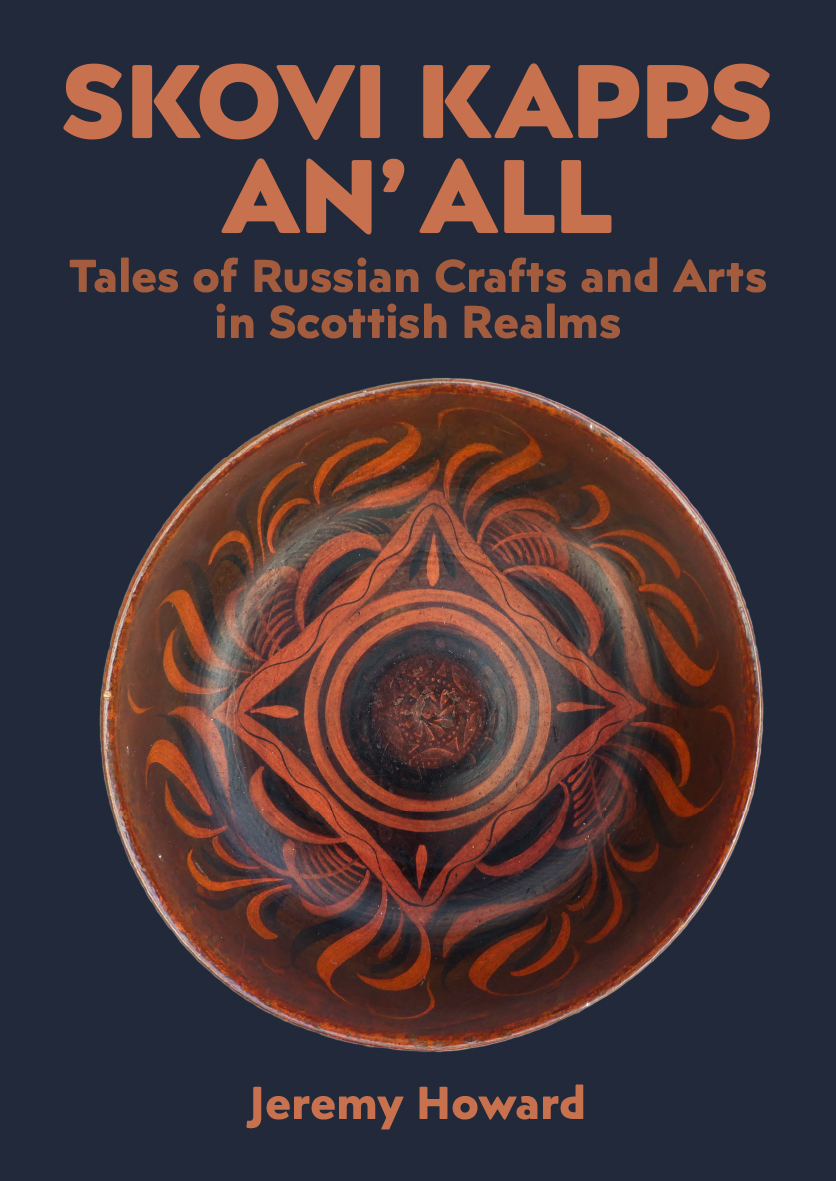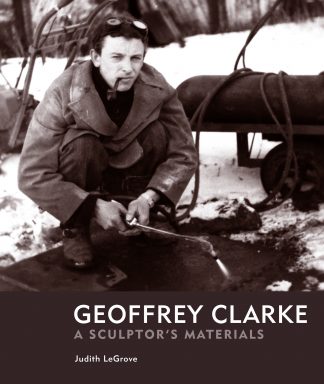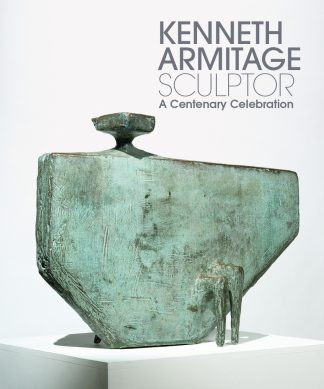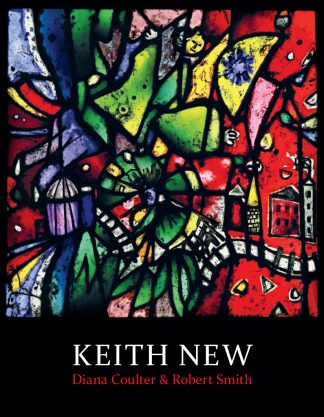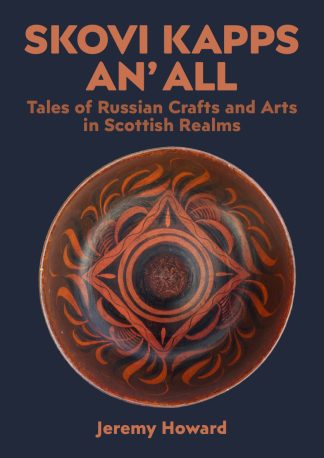Description
Skovi Kapps an’ All
Tales of Russian Crafts and Arts in Scottish Realms
Skovi kapps is the Shetland term for the ornamented handleless wooden cups and bowls that comprised the most widespread form of Russian art found in nineteenth-century Scotland. Coming more recently to be known as Khokhloma, the warmth of this richly decorated ware found a special place in cottages and collections across the country.
The tales begin with telling what Skovi kapps are, what messages lie in their painting, why they arrived in such huge numbers, and how they have been adopted and adapted. With this is shown how preferences for tea, flax and timber played their part. The next tale is of Russian treen in the National Museum of Scotland, Edinburgh. Nurtured by the vision of first director Arthur Croxen Arthur, this unfolds through wooden cutlery and distaffs, the form, intricate carving and painted decoration of which speak of the life of St Sergius, lives of Russian women and Russian country life per se. Having spun the distaff yarns, it is then the turn of tales of ‘sputniks’, i.e. other manifestations that accompanied the arrival of Skovi kapps on Scottish shores. These include: a live bear for Angus; immersive touring ‘Russian excursion’ diorama shows; and ‘cabinet’ Cossack, knight and hunting sculptures destined for Forfar and Perth (the latter for John Everett Millais’ in-laws, the Grays). After these the tales take a Bashkir twist, thereby extending notions of ‘things Russian’ and delving into the craftistry of the nomadic and mainly Moslem Turkic peoples of the steppe. Protagonists in this are painter William Allan, geologist Roderick Murchison and doctor George Carrick, their representation of Bashkort folk and milch mares leading to Scotland’s sculpted kumis scoop.The concluding tale considers the Russian village at the 1901 Glasgow International Exhibition and the activities of Madam Pogosky, whose Russian Peasant Industries Depot in Edinburgh was pivotal for extending the Scottish love affair with Russian craft to needlework, papier-mâché boxes, pokerwork, toys and dolls.
In sum, these intertwined tales show a patchwork of Russian crafts and arts in Scottish realms (and by extension Britain), which goes considerably beyond that usually acknowledged. By unfolding their qualities and place we are led to contemplate how their collective presence may serve to humbly enhance the spaces inhabited by our bodies and minds.
About the author
Jeremy Howard taught art history at the University of St Andrews for many years. He specialises in a mix of modern art, architecture and design from across Eurasia. A particular focus of his work is the relationship of Russian and Scottish art from the eighteenth to early twentieth centuries. He lectures and publishes widely, his books including East European Art (Oxford University Press, 2006), St Petersburg (National Geographic, 2007), Balkan Fabrications (Sansom, 2022) and the forthcoming Essays in Latvian Artistic Outreach (Neputns, 2027).

